The two-storey, classicist houses and the smaller factories and workshops between them along Ferenc Boulevard, which was originally called Malom Street, were replaced by the multi-storey houses – which still define the unified view of the outer ring road – from the mid-1880s onwards.
On the corner of the boulevard and side streets, larger buildings with more detailed facades enhanced the overall effect. One such building stood at 46 Ferenc Boulevard, on the corner with Üllői Street. The residential building was completed in 1890. Its designers and owners were the architects József Hubert and Károly Móry.
They are known as the designers of several residential houses, urban palaces, rural manors and public buildings in Budapest. The palace of the brewer Antal Dréher Jr., in Kossuth Lajos street, the house of Dr Heinrich Kálmán, the director of the Rác Baths at 6 Döbrentei Street and the palace of István Fülöp on the corner of Dob Street and Vörösmarty Street prove that the pair of architects well versed in historicism designed a beautiful building to stand opposite the massive structure of the Maria Theresa Barracks.

The corner of Üllői Road – Ferenc Boulevard around 1900, the Museum of Applied Arts in the background, 46 Ferenc Boulevard in the foreground, 41 and 39 Üllői Road behind (Source: Ferencváros Local History Collection)
46 Ferenc Boulevard was a five-storey upscale residential building with several domes. The shop and warehouse of a tailor, Mór Preisich operated on the ground floor of the street front facing Üllői Road. However, the real sight to behold was the facade on Ferenc Boulevard. Four meticulously worked columns protruded from the plane of the facade, and antique-style ornaments were placed above the wrought-iron gate of the main entrance. However, the main attraction was inside a café which, had naturally, already been on the original plans.
In 1890, a certain Aurél Kereszty opened his establishment, and the following year, József Gebauer, one of the most successful café-operators in Budapest, took over the business. He published the following advertisement in contemporary dailies. The ad not only served as an example to his competitors, but the short list of services also guaranteed high-quality service:
“I have the honour of informing the respected public that I have opened a new café under 46 Ferenc Boulevard on the corner of Üllői Road. The bright and comfortably furnished café meets all requirements of the modern age, is called KÖRÚTI KÁVÉHÁZ, and will open on Saturday, 3rd October. The finest American billiard tables are available for respected guests, as are a number of domestic and foreign newspapers at all times. High quality drinks are provided. Wishing several visits, with respect...!”
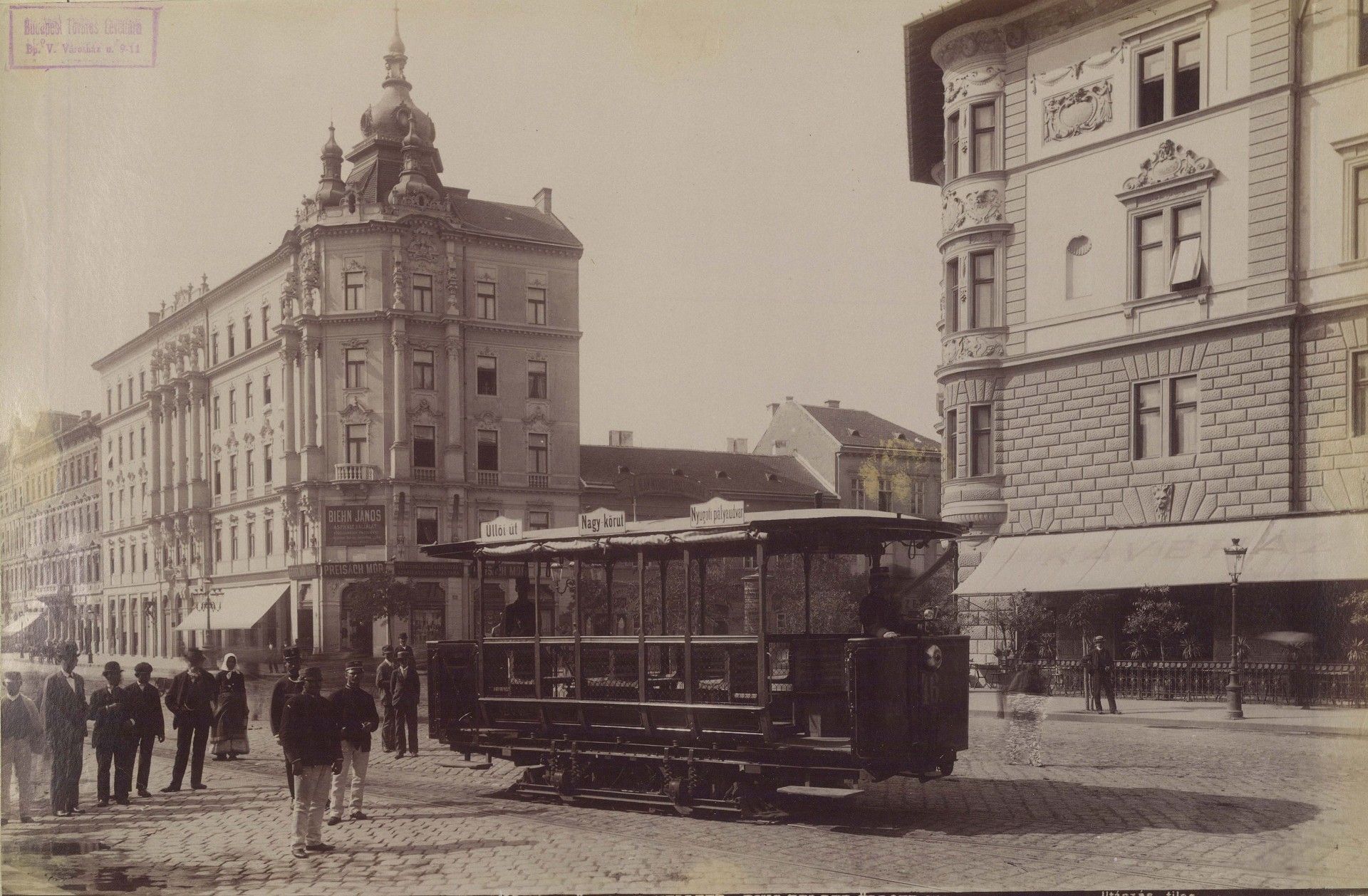 Tram at the junction of József Boulevard and Üllői Road, 46 Ferenc Boulevard in the background (Photo: Fortepan/Budapest Archives, Archival No.: HU.BFL.XV.19.d.1.07.109)
Tram at the junction of József Boulevard and Üllői Road, 46 Ferenc Boulevard in the background (Photo: Fortepan/Budapest Archives, Archival No.: HU.BFL.XV.19.d.1.07.109)
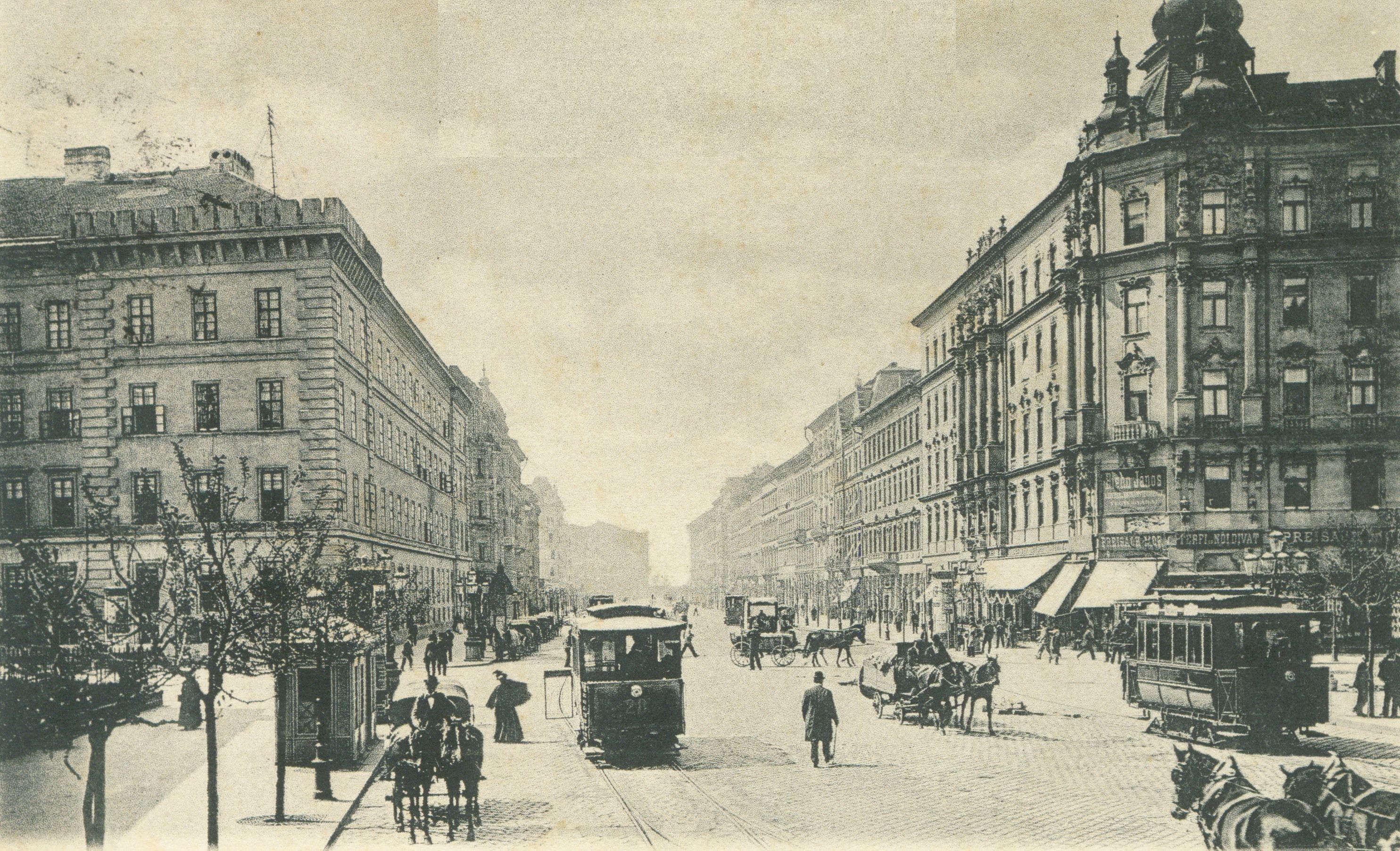
The Grand Boulevard at Üllői Road, 46 Ferenc Boulevard to the right (Source: Ferencváros Local History Collection)
At the turn of the century, the café became an important location of sports life in Ferencváros, especially football. The founders of FTC often gathered here to debate the creation of the association. Of them, Kornél Gabrovitz took the floor most often, which may have impressed Stefania Gebauer, one of the owner's daughters. One of the largest sports associations was born in 1899 as a result of these meetings, as was the marriage of Stefania and Kornél..
Whether family involvement was the cause or not, the club’s office also operated in the café for years. Legend has it that the first goalposts of the very first pitch were stored here when they were not needed. In 1909, József Gebauer moved his headquarters to Buda, selling the right to operate the establishment to Zsigmond Rapszky, who had previously owned the Erzsébet Bridge Café on Döbrentei Square. A decade later, the building was no longer primarily visited by coffee lovers, but those looking for sweets. The Stühmer Chocolate Factory opened a shop in 1925 with an interior design by Ferenc Kende.
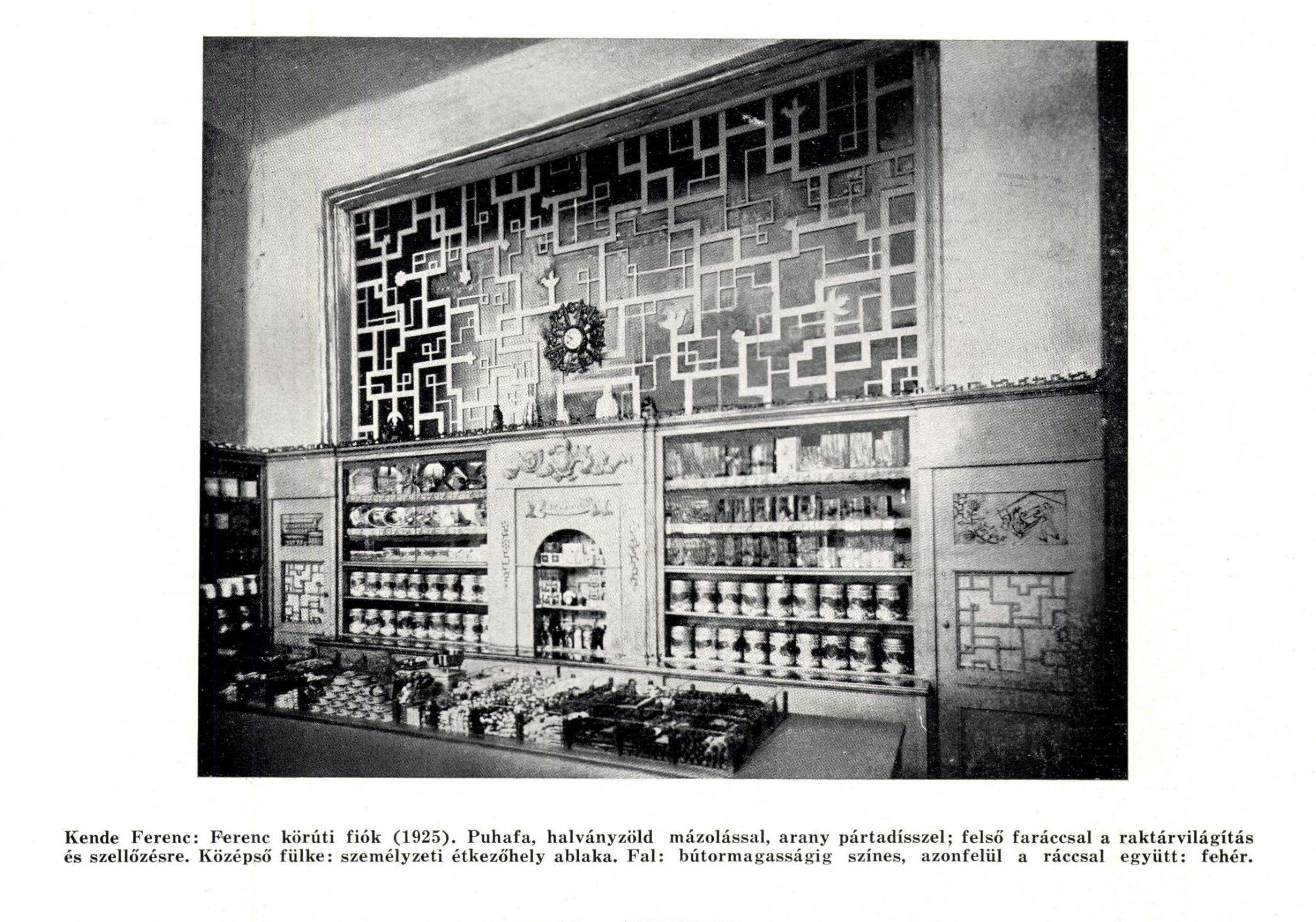
A photo of the shop appeared in the June 1929 issue of Tér és Forma
Now take a few imaginary steps towards Kálvin Square along Üllői Road. A two-storey house stood on the corner of today's Hőgyes Endre (then Rákos) Street, where residents suffering from excessive consumption of food and drink, or other maladies could find a cure. In 1847, Alajos Ivanovics' opened his pharmacy addressed to the Angel in the house. In 1869, pharmacist Arnold Baier bought the house and had it remodelled it according to the plans of Antal Gottgeb. Huge inscriptions and a figurative statue on the corner facade of the building represented the angelic presence.
Arnold Baier soon gained a reputation in Budapest for his cough drops and laxatives. His son was perhaps even more successful thanks to a chocolate-flavoured version of the product called Purgo. He set up an entirely new factory to meet demand. In 1902, Dezső Bayer (the son, who also had a doctorate and spelt his name differently from his father) bought the one-storey small house between 46 Ferenc Boulevard and the Angyal Pharmacy to ensure his ever-growing business had enough space.
The Purgo Factory became so well-known and sought-after that a Bayer plant was opened in Szakolcs, Nitra County, and digestive tablets were available in almost every country in Europe and even in North and South America. The company operated until the siege of Budapest in World War II.
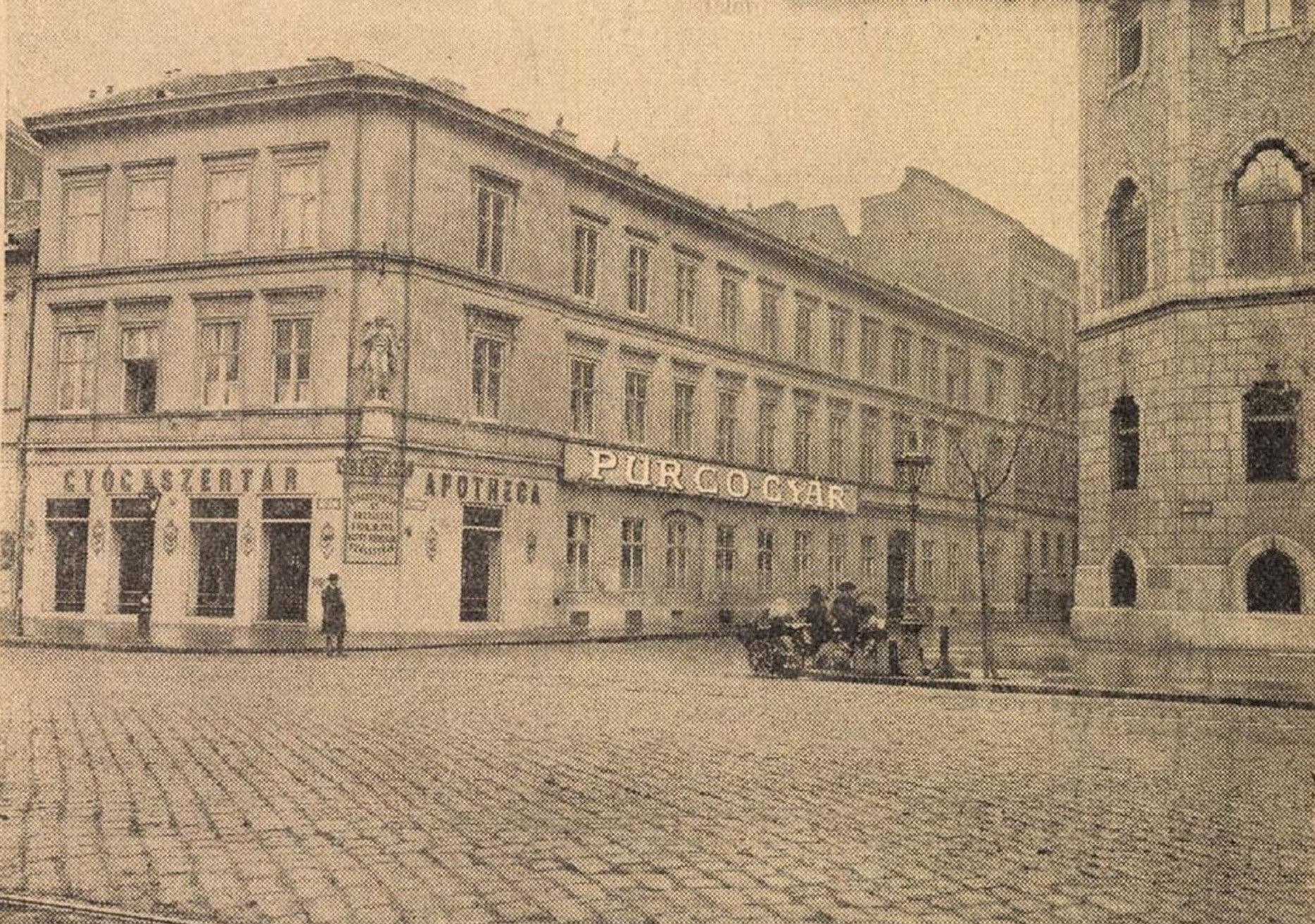 The Angyal Pharmacy on the corner of Üllői Road – Hőgyes Endre Street (Source: Tolnai Világlapja, 22 March 1908)
The Angyal Pharmacy on the corner of Üllői Road – Hőgyes Endre Street (Source: Tolnai Világlapja, 22 March 1908)
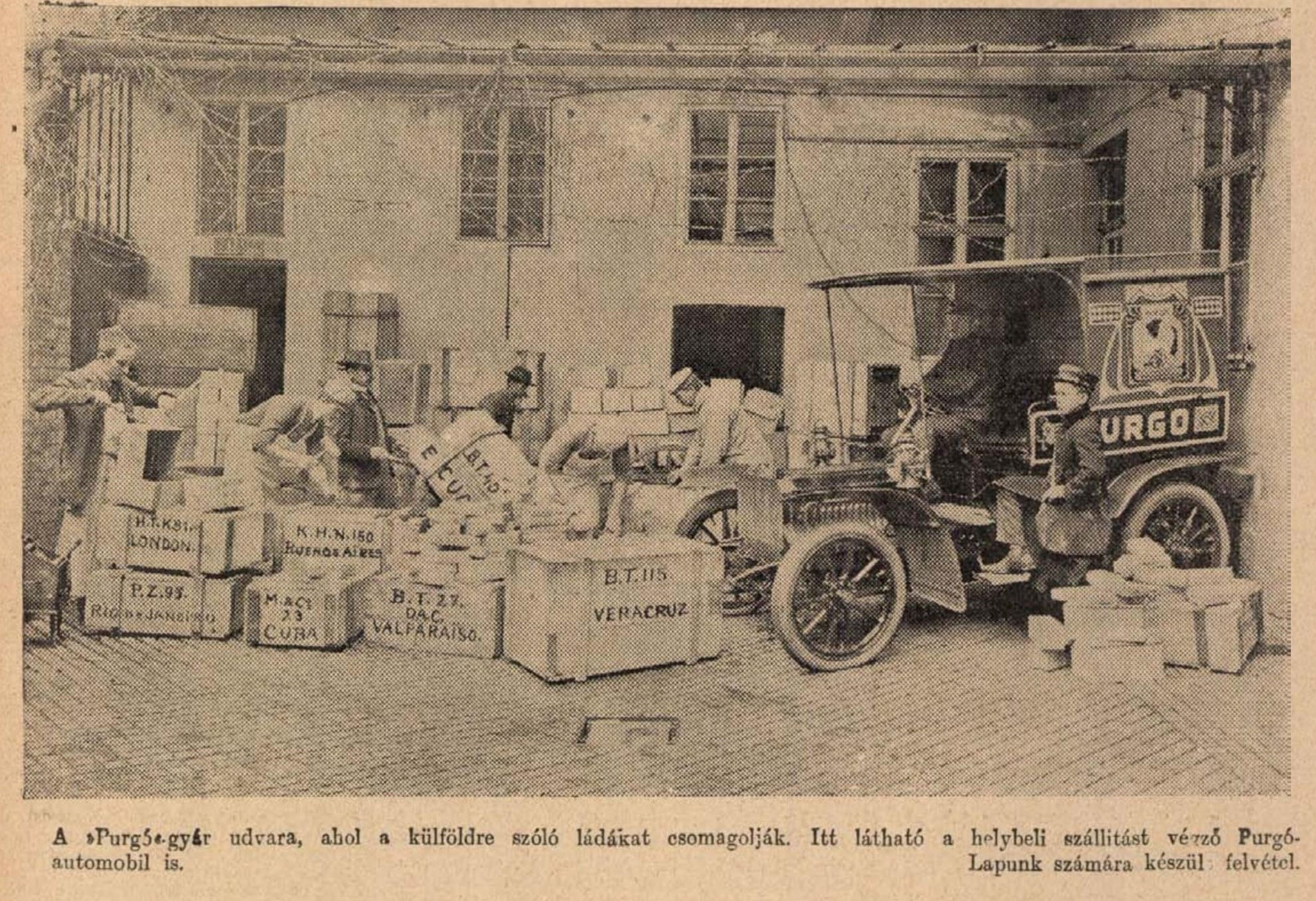 Courtyard of the Purgo factory (Source: Tolnai Világlapja, 22 March 1908)
Courtyard of the Purgo factory (Source: Tolnai Világlapja, 22 March 1908)
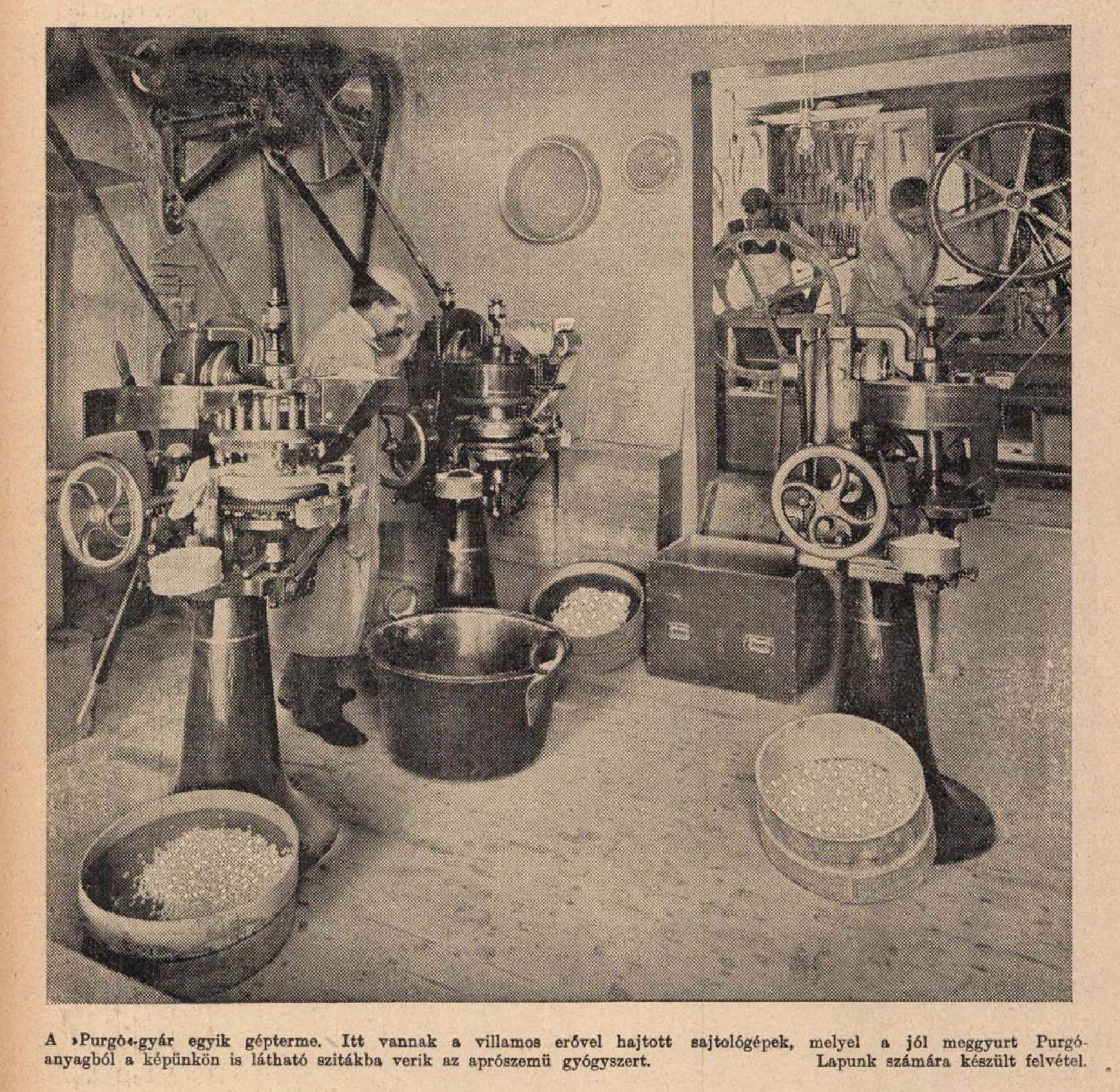
Picture of pharmaceutical production (Source: Tolnai Világlapja, 22 March 1908)
Although the three houses were damaged in the fighting during the winter of 1944–1945, they were eventually more or less restored. However, during the 1956 Revolution and War of Independence, they suffered severe damage that sealed their fate. Reconstruction was impossible after the damage caused by Soviet tanks.
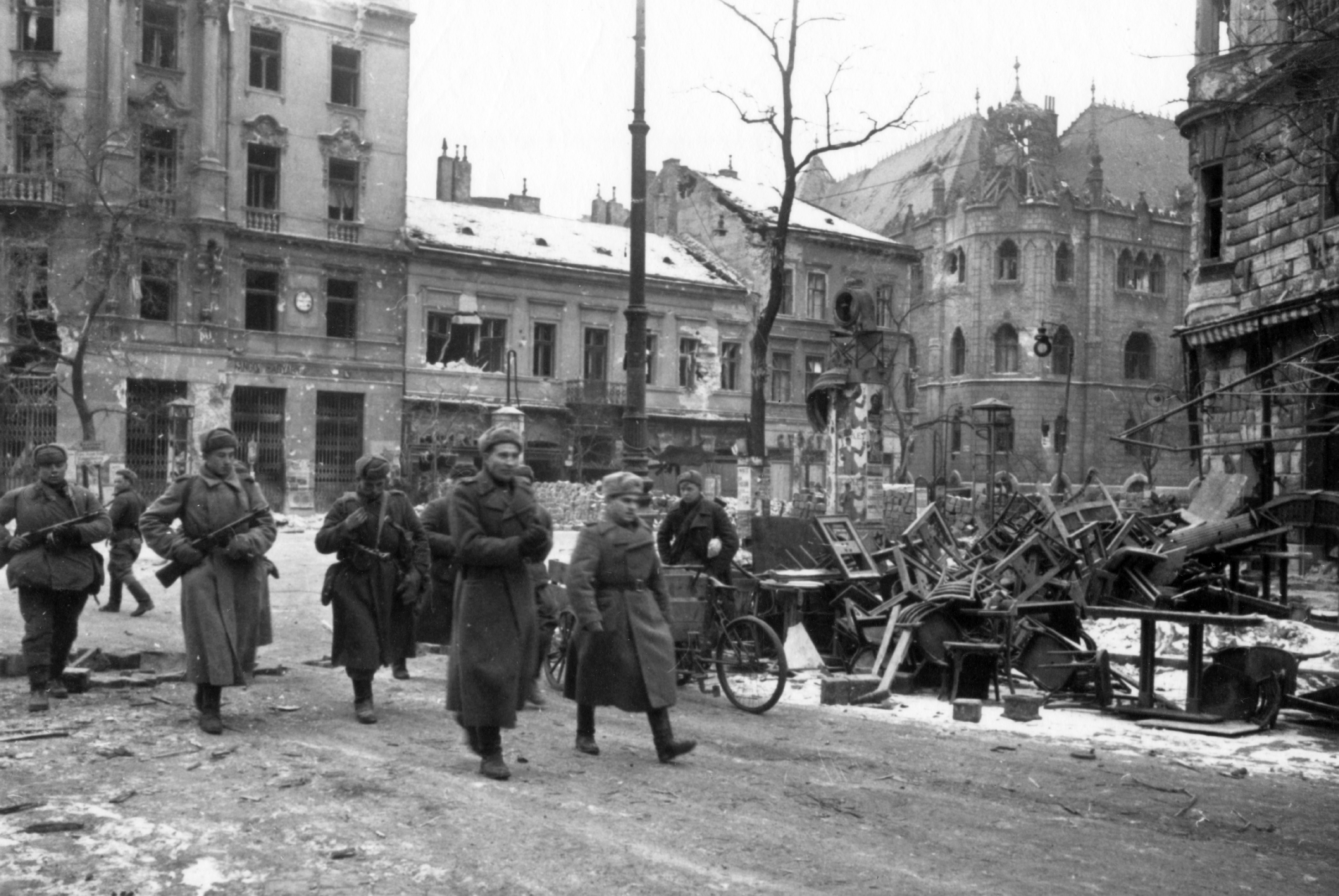 Soviet soldiers on József Boulevard in January 1945, the three houses and the Museum of Applied Arts in the background
Soviet soldiers on József Boulevard in January 1945, the three houses and the Museum of Applied Arts in the background
(Photo: Fortepan /No.: 32051)
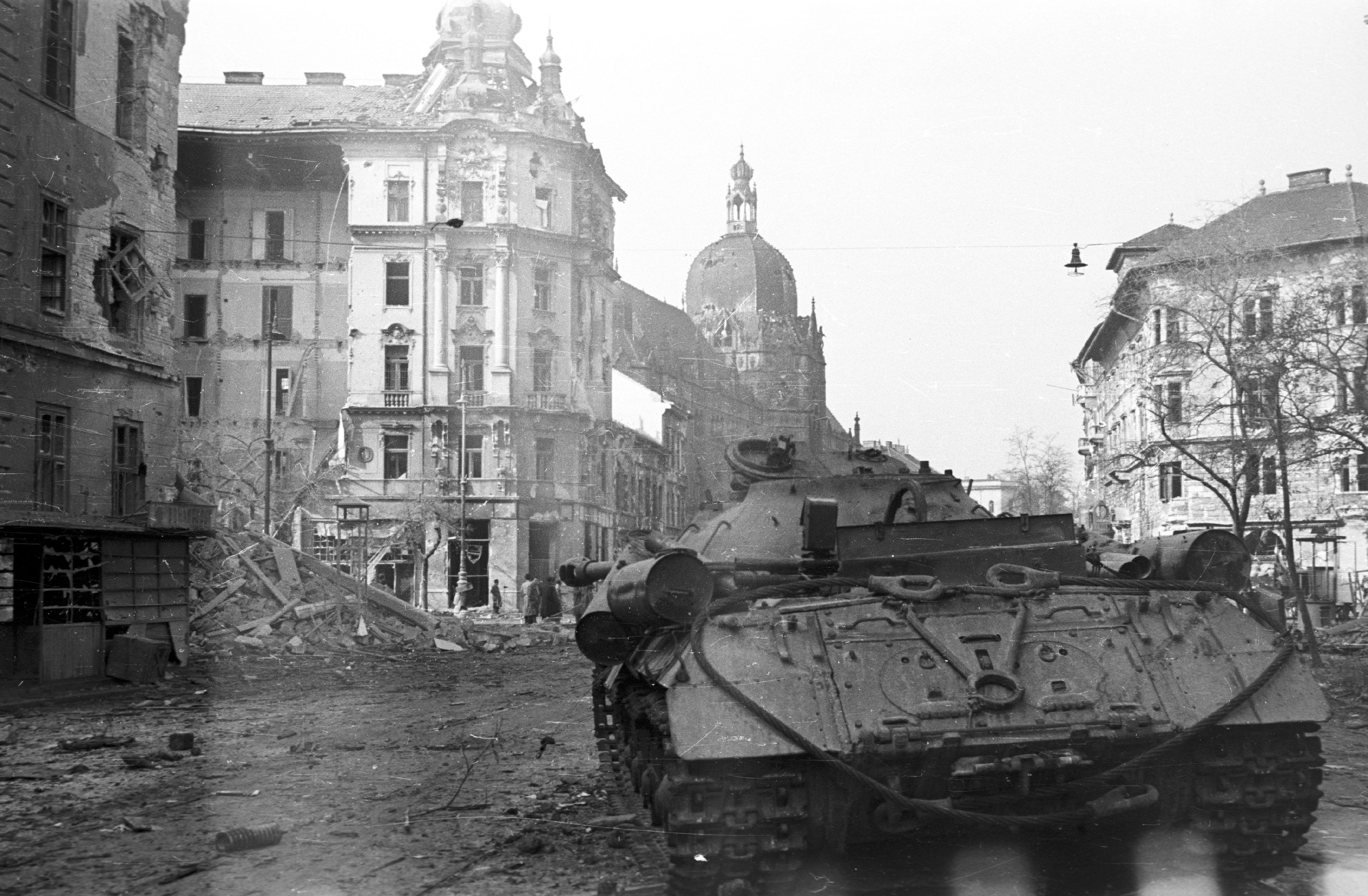
The corner of Üllői Road and Ferenc Boulevard, 46 Ferenc Boulevard on the left in ruins (Photo: Fortepan/No.: 39833)
The houses were demolished in 1957, and a large-scale building was erected in their place in 1959, which has since been known as the Lottóház, or Lottery House. However, that is another story. The memory of the former café is preserved in postcards, photos and the record of sporting history. The equipment of the Angyal Pharmacy is stored in the Semmelweis Museum of Medical History.
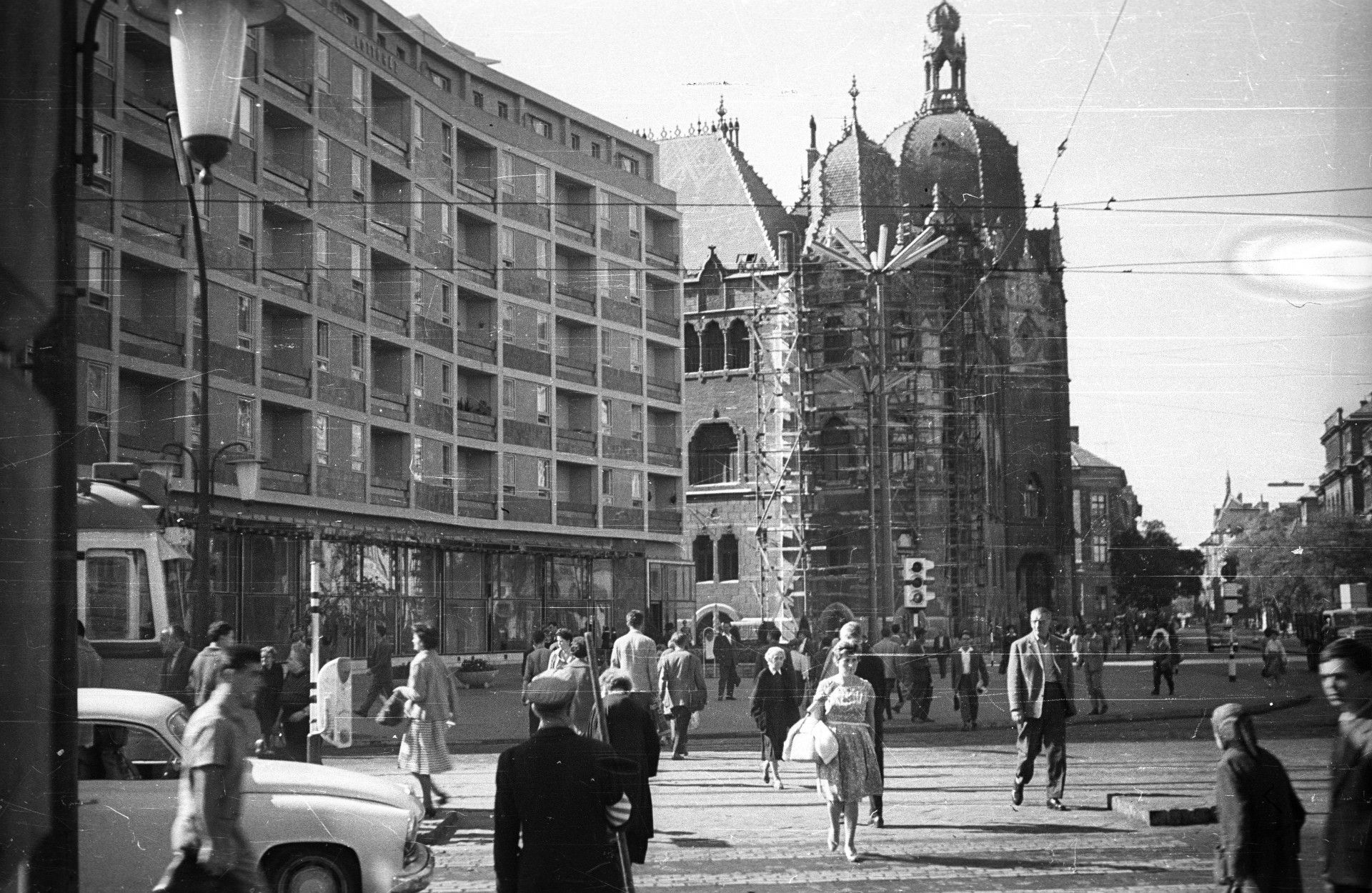 The Lottóház in 1966 (Photo: Fortepan/No.: 118192)
The Lottóház in 1966 (Photo: Fortepan/No.: 118192)
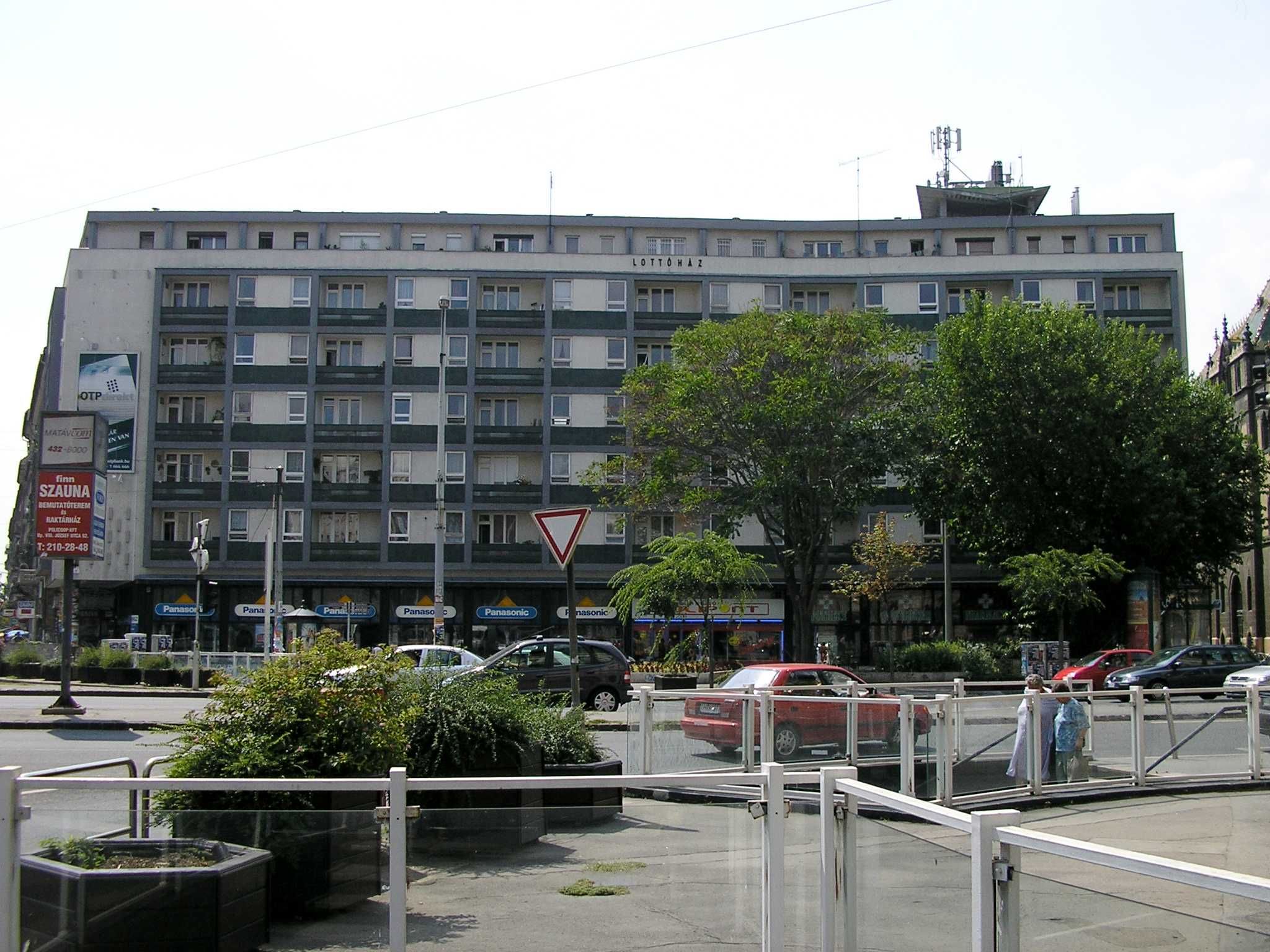 The Lottóház and Angyal István Park in front of it in 2014 (Photo: Ferencváros Local History Collection)
The Lottóház and Angyal István Park in front of it in 2014 (Photo: Ferencváros Local History Collection)
Cover photo: The corner of Üllői Road – Ferenc Boulevard around 1900, the Museum of Applied Arts in the background, 46 Ferenc Boulevard in the foreground, 41 and 39 Üllői Road behind (Source: Ferencváros Local History Collection)

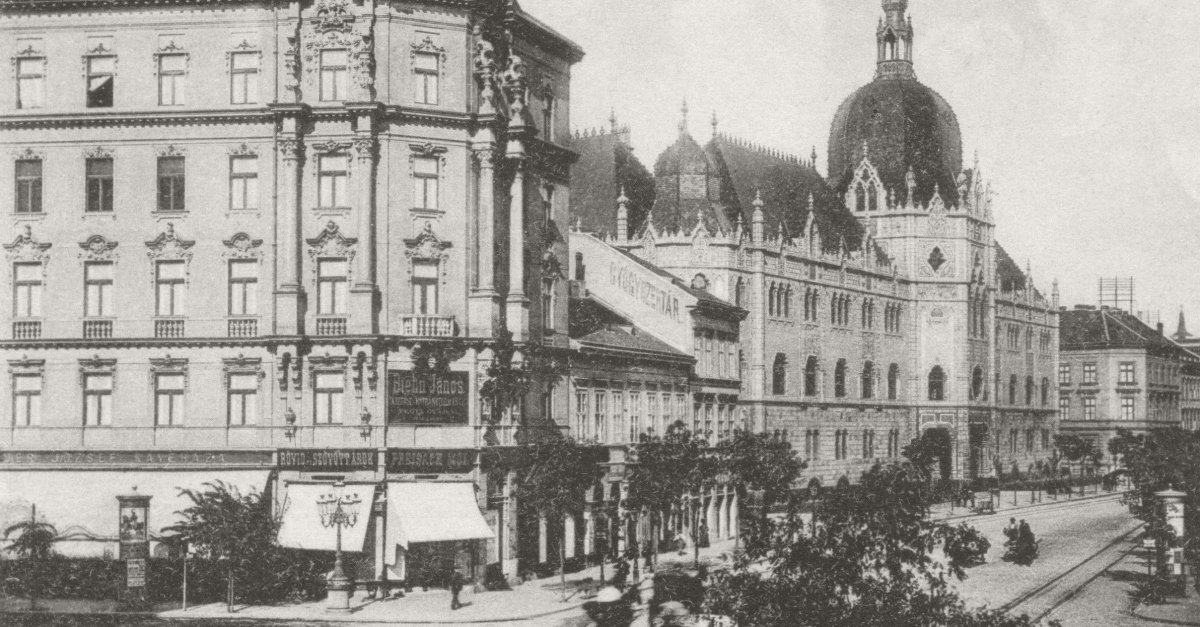



































Hozzászólások
Log in or register to comment!
Login Registration